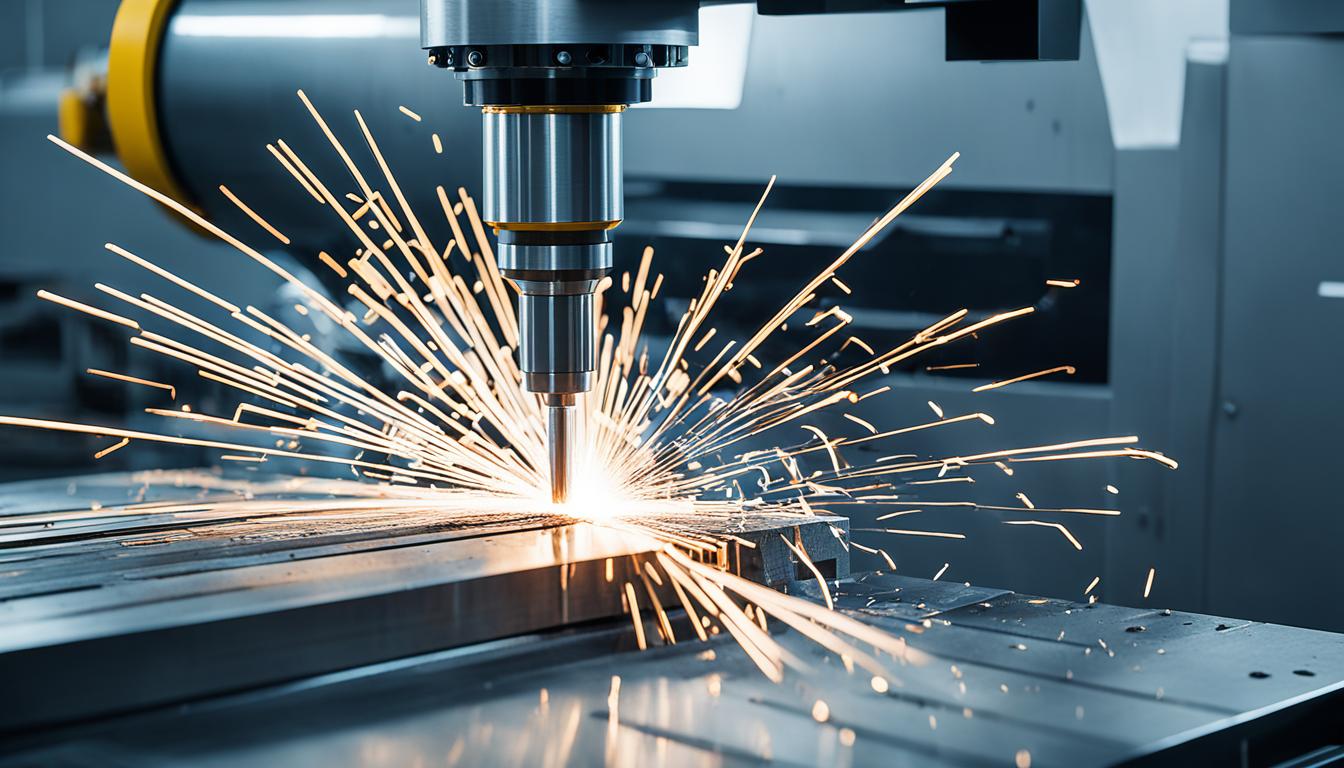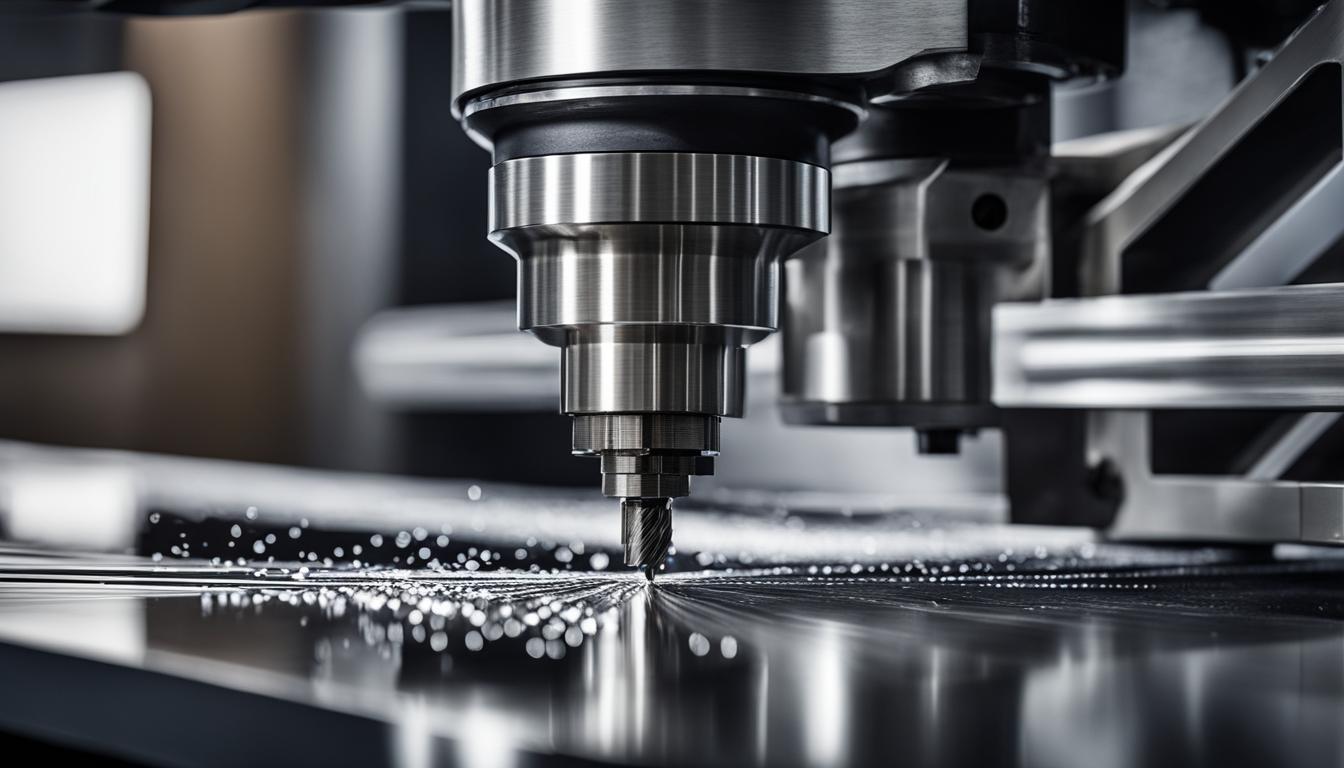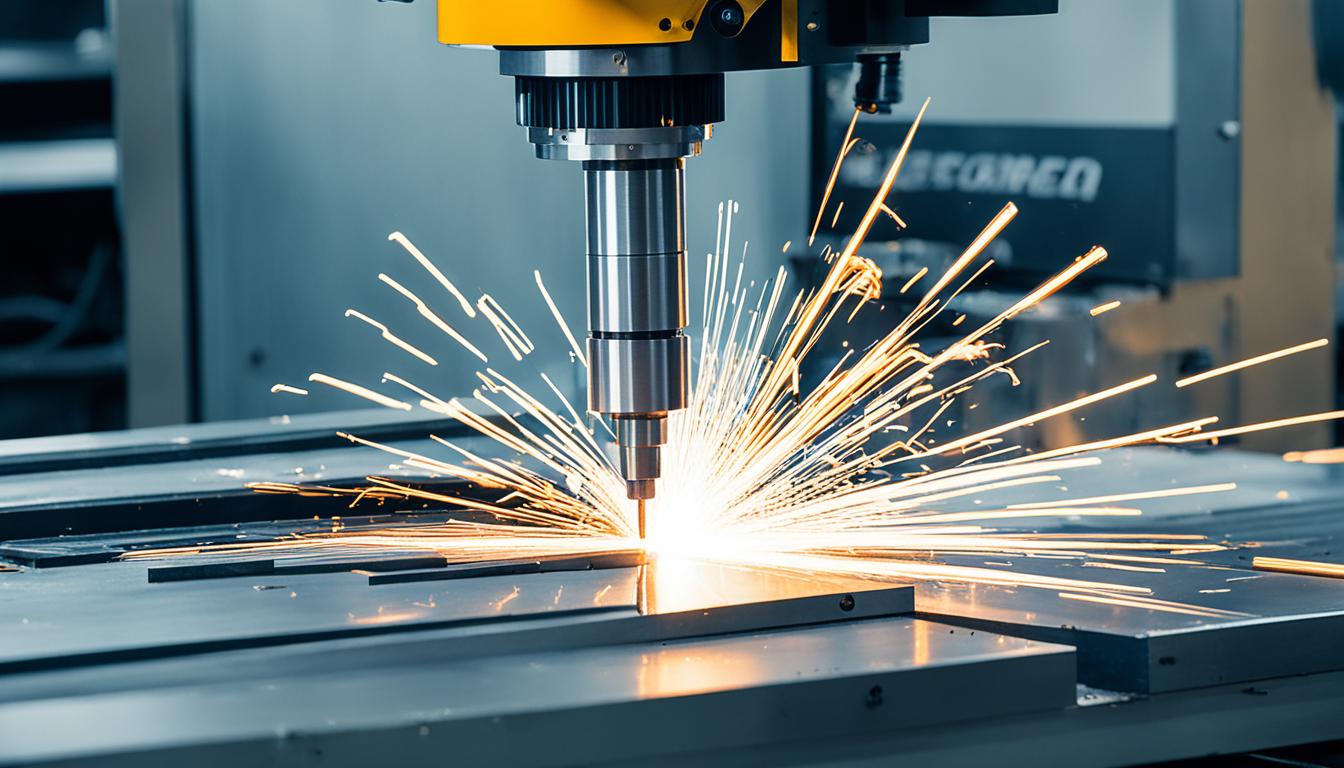Mastering CNC machines requires a comprehensive understanding of computer-aided design (CAD), computer-aided manufacturing (CAM), and machine operation. Operators must be proficient in programming G-code, setting up workpieces, selecting appropriate cutting tools, and adjusting machine parameters for optimal performance. Key skills include interpreting technical drawings, troubleshooting mechanical and software issues, and maintaining strict quality control standards. Safety protocols, such as proper machine guarding and personal protective equipment usage, are essential.
Advanced operators should be familiar with multi-axis machining, tool path optimization, and high-speed cutting techniques. Continuous learning is crucial, as CNC technology evolves rapidly, introducing new features like adaptive machining and IoT integration. Effective communication with design teams and production managers is vital for streamlining workflows and maximizing efficiency.
Mastery also involves understanding material properties, cutting strategies, and post-processing techniques to achieve precise tolerances and superior surface finishes across various applications in industries such as aerospace, automotive, and medical device manufacturing.
- Understand the principles and processes involved in CNC machining
- Learn essential skills and techniques for operating CNC machines
- Discover the benefits and considerations of using CNC machining
- Explore the role of precision manufacturing companies, especially in China
- Get acquainted with the CNC programming handbook for reference and training
What is CNC Machining?
CNC machining, also known as Computer Numerical Control machining, is a modern manufacturing process that leverages computerized controls and automated machinery to produce highly precise and intricate parts and components. By utilizing pre-programmed software, CNC machines can control the movements and operations of various machine tools, such as lathes, mills, and routers.
This advanced manufacturing technique has revolutionized various industries by enabling businesses to create complex and customized parts with exceptional accuracy and consistency. From aerospace and automotive industries to healthcare and electronics, CNC machining has become a cornerstone of modern manufacturing processes.
Through CNC machining, manufacturers can achieve tight tolerances, intricate geometries, and superior surface finishes, surpassing what would be possible with manual machining methods. The automation aspect of CNC machines significantly improves production speed and efficiency, reducing the need for manual labor and increasing productivity.
With CNC machining, businesses can bring their design concepts to life, transforming digital models into physical components with exceptional precision and consistency. This manufacturing process offers numerous advantages, including the ability to work with a wide range of materials, cost-effectiveness in high-volume production, and the ability to quickly adapt to design changes.
How CNC Machining Works
CNC machining is a complex process that involves various steps to create precision parts. Understanding how it works is essential for operators to fully utilize the capabilities of CNC machines. Here is a breakdown of the key processes involved:
1. Computer-Aided Design (CAD)
The first step in CNC machining is creating a 3D digital model of the desired part using Computer-Aided Design (CAD) software. This software allows designers to create detailed and accurate models of the part, specifying dimensions, geometries, and other features.
2. Computer-Aided Manufacturing (CAM)
Once the CAD model is complete, it needs to be converted into machine-readable code using Computer-Aided Manufacturing (CAM) software. The CAM software generates toolpaths and instructions for the CNC machine based on the CAD model. It determines the cutting paths, tool selection, feed rates, and other parameters necessary for the machining process.
3. G-code
The code generated by the CAM software is typically written in G-code, a standardized programming language used by CNC machines. G-code contains instructions for the CNC machine, specifying tool movements, feed rates, spindle speeds, and other commands necessary to produce the desired part.
4. Machine Setup
After the G-code is generated, the operator sets up the CNC machine for machining. This involves securing the raw material in the machine, positioning the cutting tools, and calibrating the machine to ensure accuracy and precision.
5. Cutting Process
Once the machine setup is complete, the operator loads the G-code into the CNC controller. The controller interprets the code and commands the machine to execute the programmed tool movements. The cutting process begins as the machine removes material from the raw stock, following the toolpath instructions in the G-code.
6. Quality Control
Throughout the cutting process, operators monitor the quality and accuracy of the part. They perform periodic checks and measurements to ensure that the dimensions and tolerances are within the specified requirements. If any issues or deviations are detected, adjustments can be made to the machine or the machining parameters to maintain the desired quality.
7. Finishing
Once the cutting process is complete, the part may require additional finishing processes. This can include deburring to remove sharp edges, sanding or polishing for a smooth surface finish, and applying coatings or treatments for enhanced durability or aesthetics. Finishing processes are crucial for achieving the final desired qualities of the part.

| Step | Description |
|---|---|
| Computer-Aided Design (CAD) | Creating a 3D digital model of the part using CAD software. |
| Computer-Aided Manufacturing (CAM) | Converting the CAD model into machine-readable code using CAM software. |
| G-code | Writing the instructions for the CNC machine in G-code format. |
| Machine Setup | Securing the raw material, positioning cutting tools, and calibrating the machine. |
| Cutting Process | Executing the tool movements and material removal as per the G-code instructions. |
| Quality Control | Monitoring the part’s quality and accuracy during the machining process. |
| Finishing | Performing additional processes like deburring, sanding, or coating for the desired final qualities. |
Benefits of CNC Machining
CNC machining offers numerous benefits that make it an essential process in various industries. One of the key advantages is the high level of precision and accuracy it provides, allowing for the production of complex parts with tight tolerances.
Additionally, CNC machining automates the production process, leading to increased productivity and efficiency. The use of computerized controls and automated machinery eliminates the need for manual intervention, reducing human error and ensuring consistent quality.
CNC machining also allows for faster production times. With the ability to quickly change tooling and run multiple operations simultaneously, manufacturers can optimize their workflow and meet tight deadlines more effectively.
Furthermore, CNC machining offers versatility in terms of materials. It can handle a wide range of materials, including metals, plastics, and composites, making it suitable for various industries such as aerospace, automotive, and healthcare.
Cost-effectiveness is another key advantage of CNC machining. Advancements in technology have made CNC machines more affordable, and outsourcing manufacturing to countries like China can further reduce costs without compromising on quality.
| Benefits of CNC Machining |
|---|
| Precision |
| Automation |
| Productivity |
| Versatility |
| Cost-effectiveness |
Considerations for Using CNC Machining
While CNC machining offers numerous benefits, there are important considerations to keep in mind. Understanding these factors will help you make informed decisions about utilizing CNC machining in your operations.
Initial Investment
The initial investment required for CNC machining can be higher than traditional manual machines. CNC machines are sophisticated and automated, which contributes to their higher cost. However, this investment is offset by the precision, efficiency, and productivity gains that CNC machines offer in the long run.
Maintenance
Regular maintenance and calibration are essential to keep CNC machines in optimal working condition. Routine inspections, cleaning, and lubrication are necessary to ensure the accuracy and performance of the machine. This maintenance helps prevent breakdowns and extends the lifespan of the equipment.
Skill Level
Operating and programming CNC machines require specialized skills and knowledge. Professionals with experience in CNC machining or a background in engineering and programming are well-suited for these tasks. It’s crucial to invest in training and continuous learning to develop the necessary skills for effective CNC machine operation.
Choosing a Precision Manufacturing Company
When considering CNC machining, it’s important to choose a reliable and experienced precision manufacturing company. Partnering with a trusted manufacturer ensures that you receive high-quality and precise components for your specific requirements. Collaborating with professionals who understand the intricacies of CNC machining can significantly enhance your project’s success.
By taking these considerations into account, you can optimize your CNC machining process and reap the benefits of precision manufacturing.

| Considerations | Key Points |
|---|---|
| Initial Investment | Higher cost compared to manual machines |
| Maintenance | Regular maintenance and calibration required |
| Skill Level | Specialized skills and knowledge needed for operation |
| Choosing a Precision Manufacturing Company | Reliable and experienced partner for high-quality components |
Working with a Precision Manufacturing Company in China
When it comes to CNC machining, it is essential to partner with a reliable and experienced precision manufacturing company. If you are considering outsourcing your CNC machining projects to China, China 2 West is a trustworthy option to explore. As a British-owned manufacturing consultancy based in China, they offer the expertise and support needed for private label projects.
China 2 West is dedicated to ensuring the success of your project by providing high-quality, precision components at a competitive price. With their extensive knowledge of CNC machining and commitment to delivering exceptional results, you can trust them to meet your manufacturing needs.
By working with China 2 West, you can benefit from their:
- Expertise in precision manufacturing
- Deep understanding of CNC machining processes
- Ability to produce high-quality components
- Commitment to delivering on time and on budget
- Competitive pricing
China 2 West has established a strong reputation as a trusted precision manufacturing company in China. Their team of professionals is dedicated to meeting customer requirements and exceeding expectations. With their advanced facilities and skilled workforce, they are capable of producing complex and intricate parts with precision.
To give you a better idea of their capabilities, here is an example of the high-quality components they can manufacture:
| Component | Material | Tolerance |
|---|---|---|
| Custom gear | Stainless steel | +/- 0.01mm |
| Precision shaft | Aluminum | +/- 0.005mm |
| CNC milled part | Brass | +/- 0.02mm |
As you can see, the precision and quality provided by China 2 West are critical in CNC machining. Their competitive pricing ensures that you can benefit from cost-effective manufacturing without compromising on quality.
Partnering with China 2 West will give you peace of mind, knowing that your CNC machining projects are in capable hands. Their commitment to delivering high-quality components at competitive prices sets them apart in the precision manufacturing industry. Whether you require small-scale production or mass production, China 2 West is equipped to meet your needs and exceed your expectations.
When it comes to CNC machining, ensure you choose a reliable and experienced precision manufacturing company like China 2 West to achieve your goals. Contact them today to discuss your project requirements and see how they can support your CNC machining endeavors.
CNC Lathe Machines: Key Components
CNC lathe machines are an integral part of CNC machining, consisting of various key components that play vital roles in the machine’s operation. Understanding these components is essential for efficient and accurate machining processes.
1. Headstock
The headstock is a crucial component of CNC lathe machines as it houses the mechanisms responsible for powering and controlling the spindle. It provides rotational movement to the workpiece, allowing for the precise cutting and shaping of materials.
2. Tailstock
The tailstock provides support for machining extended workpieces. It secures the workpiece opposite the headstock, ensuring stability during the machining process. The tailstock also helps in maintaining alignment and preventing vibration.
3. Tailstock Quill
The tailstock quill supports the longitudinal end of the workpiece, providing additional stability while machining. It can be extended or retracted as required, allowing for flexibility in accommodating different workpiece lengths.
4. CNC Lathe Bed
The CNC lathe bed forms the foundation of the machine, providing stability and counteracting vibrations during machining. The bed is typically made of robust materials, such as cast iron or steel, to ensure accurate and consistent machining results.
5. Foot Pedals
Foot pedals offer hands-free control of various machine functions, enabling the operator to focus on the machining process. They allow for convenient and efficient operation, enhancing productivity and workflow management.
6. Chuck
The chuck is responsible for gripping and securing the workpiece during machining. It ensures that the workpiece remains firmly in place, allowing for precise cutting and shaping. Chucks come in various types, such as three-jaw chucks and four-jaw chucks, depending on the specific machining requirements.
7. Tool Turret
The tool turret holds the cutting tools and facilitates tool changes during machining operations. It allows for the use of multiple tools without the need for manual intervention, enabling seamless transitions between different machining processes.
Understanding the function and importance of these key components is essential for operating CNC lathe machines effectively. Each component contributes to the overall precision, efficiency, and quality of the machining process, resulting in accurate and consistent results.
CNC Programming Handbook
The CNC Programming Handbook is a widely recognized resource for CNC programming training and reference. It is the go-to guide used by educational institutions and professionals in the field. This comprehensive handbook covers all aspects of CNC programming, providing valuable insights and guidance for programmers and machine operators.
Loaded with hundreds of illustrations, tables, formulas, tips, shortcuts, and real-world examples, the CNC Programming Handbook is an indispensable tool for anyone involved in CNC programming. Whether you’re a beginner looking to learn the basics or an experienced professional seeking advanced techniques, this handbook has got you covered.
By studying the CNC Programming Handbook, you will gain a deep understanding of computer numerical control (CNC) programming principles, enabling you to create efficient and precise machining programs. From programming fundamentals to advanced techniques, this handbook is a treasure trove of knowledge that will boost your programming skills and enhance your productivity.
Key Features of the CNC Programming Handbook:
- Comprehensive coverage of CNC programming principles and techniques
- Illustrations, tables, and formulas for easy comprehension
- Real-world examples and practical tips for effective programming
- Shortcuts and time-saving techniques to maximize efficiency
- Guidance on troubleshooting common programming issues
- Reference content for quick and easy access to critical information
Whether you’re seeking to expand your CNC programming knowledge, improve your programming skills, or refer to essential programming information on the job, the CNC Programming Handbook is your ultimate resource. It is a must-have guide that empowers you to unlock the full potential of CNC programming and excel in your role as a programmer or machine operator.
| Chapter | Topics Covered |
|---|---|
| 1 | Numerical Control |
| 2 | CNC Milling |
| 3 | CNC Turning |
Contents of the CNC Programming Handbook
The CNC Programming Handbook is a comprehensive resource that covers a wide range of topics related to CNC programming. Whether you are a beginner or an experienced programmer, this handbook offers valuable insights and practical guidance to enhance your programming skills. Here is an overview of the contents:
Numerical Control
- Introduction to numerical control
- Evolution of CNC machines
- Advantages of CNC technology
CNC Milling
- Basic milling operations
- Types of milling machines
- Milling tooling and accessories
- Programming techniques for milling
- Common milling applications
CNC Turning
- Principles of turning operations
- Components of a lathe machine
- Tooling and workholding for turning
- Programming strategies for turning
- Applications of CNC turning
Control System
- Overview of CNC control systems
- Control panel functions and features
- Programming languages
- Common control system issues and troubleshooting
Part Program Structure
- Structure and syntax of a part program
- Block numbering and sequence
- Comments and remarks in the program
- Variables and parameters
Programming Examples
Throughout the handbook, you will find numerous programming examples that demonstrate various techniques and concepts. These examples serve as valuable learning tools and provide practical insights into real-world applications of CNC programming.
Conclusion and Next Steps
Mastering CNC Machines: A Comprehensive Operator’s Handbook provides a wealth of knowledge and expertise in CNC machining. By learning and applying the skills and techniques outlined in this handbook, operators can unlock the full potential of CNC machines and excel in their roles.
To further enhance your understanding and proficiency in CNC machining, it is recommended to explore additional resources. Consider delving into books, online courses, or practical training programs that focus on CNC machining. These resources can provide valuable insights, best practices, and advanced techniques that will help you refine your skills and become a proficient CNC machine operator.
Continued learning and practice are key in the journey to mastering CNC machines. Regularly update your knowledge by exploring new technologies, industry trends, and advancements in CNC machining. Take advantage of online communities and forums where you can exchange ideas, ask questions, and learn from experienced professionals in the field.
By staying curious and committed to your growth as a CNC machine operator, you can confidently navigate the complexities of CNC machining and achieve remarkable results in precision manufacturing. Embrace the opportunities for further learning, and let your passion for CNC machining propel you towards continuous improvement and success in this dynamic industry.
